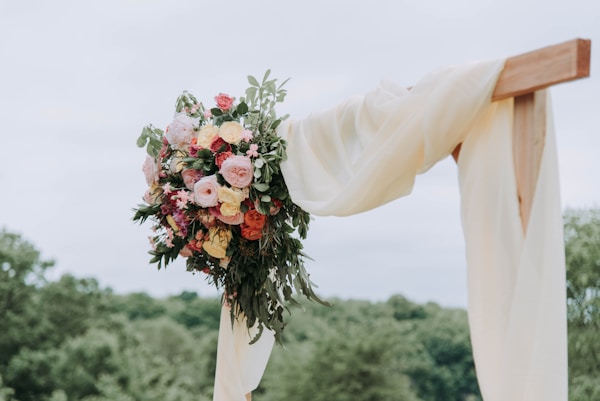Mastering the Art of Creating a Fitted Bodice with a Voluminous Skirt on a Wedding Dress
Introduction to Wedding Dress Design
Wedding dress design is a fascinating blend of art and technique, particularly when it comes to creating a fitted bodice with a voluminous skirt. This combination has become a quintessential choice for brides seeking elegance and grace on their special day. In this article, we will explore the steps involved in achieving this beautiful silhouette, as well as address common queries about wedding dress designs, styling tips, and more.
The Importance of a Fitted Bodice
A fitted bodice is crucial for any wedding dress as it defines the bride's figure, accentuating her waist and providing a framework for the overall design. It is essential to achieve the perfect fit, which includes careful measurement and selection of the right materials.
- Measurement: Accurate measurements of the bust, waist, and hips are vital.
- Fabric Choice: Choosing materials such as satin, lace, or tulle can affect the overall look and feel of the bodice.
- Boning and Structure: Incorporating boning allows for added support and shape.
The Allure of a Voluminous Skirt
The voluminous skirt is what transforms the wedding dress into a show-stopping masterpiece. This feature gives the dress a fairy-tale aspect, making it an ideal choice for brides who wish to make a statement. When designing this element, consider the following:
- Type of Skirt: Options include A-line, ball gown, or mermaid styles, each offering a different amount of volume.
- Layering: Using multiple layers of fabric, like tulle or organza, can add fullness.
- Crinolines: Adding petticoats or crinolines beneath the skirt can increase volume.
| Step | Description |
| 1 | Take Accurate Measurements |
| 2 | Select the Right Fabric |
| 3 | Design the Bodice Structure |
| 4 | Create the Skirt’s Volume |
| 5 | Make Adjustments for Fit |
Step-by-Step Process
Step 1: Taking Accurate Measurements
To create a fitted bodice, the first step is to take the bride's measurements. This process involves measuring the bust, waist, and hips, ensuring that the bodice fits snugly. Additionally, it’s important to measure the length from the shoulder to the waist to craft a comfortable bodice that doesn’t restrict movement.
Step 2: Selecting the Right Fabric
The choice of fabric is crucial in achieving the desired look. Fabrics such as satin offer a smooth finish, while lace can add intricate details and texture. When creating a voluminous skirt, fabric with a bit of stiffness may help maintain its shape, whereas softer fabrics can create a more flowing look.
Step 3: Designing the Bodice Structure
Once the measurements are taken and fabric selected, the next step is to design the bodice. This includes deciding whether to include boning and lining, which provide necessary support and comfort. Crafting muslins or mock-ups during this phase can help visualize the final look and make adjustments as needed.
Step 4: Creating the Skirt’s Volume
To achieve a voluminous skirt, various construction methods can be employed. Layers of tulle or organza can be sewn together to create a full look. For a more dramatic effect, consider adding a hoop skirt beneath the main fabric. This will enhance the volume and create a magnificent silhouette.
Step 5: Making Adjustments for Fit
After constructing the bodice and skirt, it’s essential to fit the dress on the bride. This step allows for adjustments to ensure a perfect fit, which is critical for comfort and confidence on the big day. It may require several fittings to fine-tune the silhouette and alterations.

Additional Considerations
Creating a fitted bodice with a voluminous skirt comes with various considerations beyond the initial construction. Here are a few additional elements to focus on:
- Style Elements: Details like lace appliques, beading, or embroidery can enhance the overall aesthetic.
- Train Design: Deciding on whether to include a train can affect the length and volume of the skirt.
- Wedding Theme: Ensure that the bridal gown complements the wedding theme, whether it’s vintage, rustic, or modern.
Frequently Asked Questions
In the world of wedding dress design, potential clients often have similar concerns. Here are answers to common questions:
- What if my measurements change? It’s crucial to account for potential weight fluctuations; plan follow-up fittings closer to the wedding date.
- How can I style a fitted bodice dress? Consider accessorizing with a statement belt or bold jewelry that complements the dress without overwhelming it.
- What shoes are best for a voluminous dress? Opt for heels that can provide height while ensuring stability, especially if the dress is long.
Conclusion
Creating a fitted bodice with a voluminous skirt on a wedding dress requires careful planning, precise tailoring, and an understanding of fabrics. By following the steps outlined above and taking into consideration additional factors such as style elements and the wedding theme, brides can achieve a stunning gown that reflects their individuality on their special day. As always, ensure to schedule ample fitting sessions to accommodate any changes leading up to the wedding. Whether you’re designing yourself or working with a tailor, the perfect blend of elegance and volume is achievable with dedication and attention to detail.